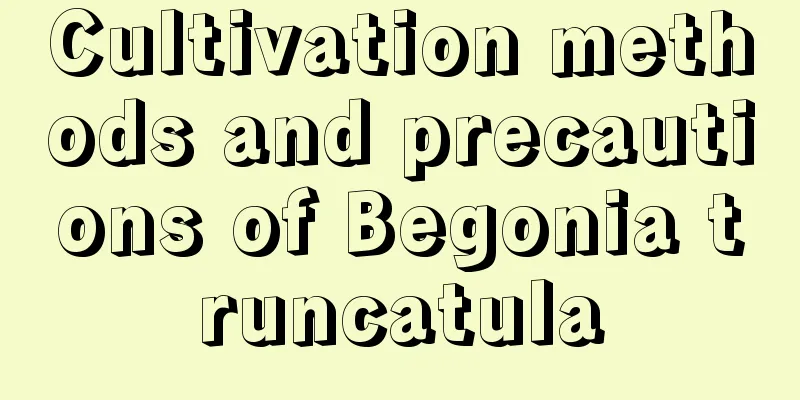What causes mint leaves to turn yellow?

|
Mint is an easy-to-care-for herb that can be propagated by sowing or cuttings. This plant exudes a refreshing aroma and can not only be used to make tea and for medicinal purposes, but also has the effect of repelling mosquitoes. In the hot summer, placing a pot of mint at home is undoubtedly an excellent choice. However, many flower lovers often have the problem of yellow leaves in the mint they grow. Let’s learn why mint leaves turn yellow. 1. Sudden changes in the environment If the soil is too wet or compacted and impermeable, it may cause root rot or insufficient absorption of water and nutrients, resulting in yellow leaves. The solution is to wait until the soil is dry before watering, and to loosen the soil moderately to improve soil permeability and drainage. 2. Improper watering Excessive watering (water-induced yellowing) or long-term lack of water (drought-induced yellowing) can cause yellow leaves. When watering, pay attention to the dryness of the soil, use clean water or rice water, and remove yellow leaves in time. 3. Air drying Lack of air humidity may cause leaf tips to dry out. The solution is to spray water or use a plastic film cover to increase the air humidity. 4. Insufficient light (yellow due to lack of light) Long-term dark environment will cause excessive growth and yellow leaves. Mint should be placed in a sunny and ventilated place, and receive appropriate sunlight in the morning and evening. 5. Temperature issues Temperatures that are too high or too low can cause yellow leaves. Pay attention to keeping warm in winter, avoid high temperatures in summer, and adjust the room temperature in time. 6. Excessive fertilization (yellow fertilizer) The new leaves are thick and uneven, while the old leaves turn yellow and fall off. Fertilization should be stopped immediately, watering should be increased to dilute the fertilizer , and the soil should be replaced if necessary. 7. Root rot The leaves appear longitudinally wrinkled and deformed. The solution is to cut off the rotten parts. 8. Pests and diseases Yellow leaves can be caused by leaf spot, mosaic disease, or an insect infestation. Spray pesticides for prevention and control in time. In short, when you are caring for mint, make sure that the mint gets enough sunlight, especially at noon. Water thoroughly until water flows out from the bottom of the pot. Use fertile, loose, breathable and water-permeable soil, such as garden soil or leaf mold, and add chicken manure fertilizer in appropriate amounts. Prune regularly to encourage growth, and loosen the soil or add new soil and fertilizer. Place mint in a well-ventilated area and avoid planting it in flower beds where it will take up space for other plants.
|
<<: How to care for the newly bought Mo Lan
>>: How to care for the newly bought desert rose
Recommend
How to deal with white anthurium after flowering
1. Treatment method: 1. Pruning: It is very impor...
Is it toxic to grow vegetables in foam boxes?
1. Is it poisonous? Foam boxes are a type of cont...
Is geranium suitable for growing at home? (Cultivation methods and precautions for potted geraniums)
Can I grow geraniums at home? Geranium has a beau...
Cultivation methods and precautions of monkey face flower
How to grow monkey face flower soil To grow monke...
Onion planting time and method cultivation technology and key points
Onion planting time Onions are suitable for sowin...
If you lay this on the surface of the pot, the leaves will not turn yellow, the roots will not rot, and the flowers will bloom continuously!
Mosquito-repellent incense ash for insect repelle...
When and how to plant Chinese cabbage moss
Planting time of cabbage moss Cabbage sprouts are...
How to water a pitcher plant and how often to water it
1. Watering method When watering it, you can prep...
How to prune the heartleaf vine when it is too long
1. Pruning method When the heartleaf vine grows l...
What to do after mountain rose blooms
1. Post-flowering treatment It usually takes five...
How long is the growth cycle of motherwort?
Introduction to the growth of motherwort Motherwo...
How often can rosemary be harvested?
Rosemary is an evergreen shrub native to the Medi...
Begonia cutting propagation method
1. Cutting time If you want to take cuttings, it ...
Cultivation methods and precautions of silver heart spider plant
Silver Heart Chlorophytum Preferences Only by ful...
How to propagate leaf cactus
1. Cutting method This is its main method of repr...









